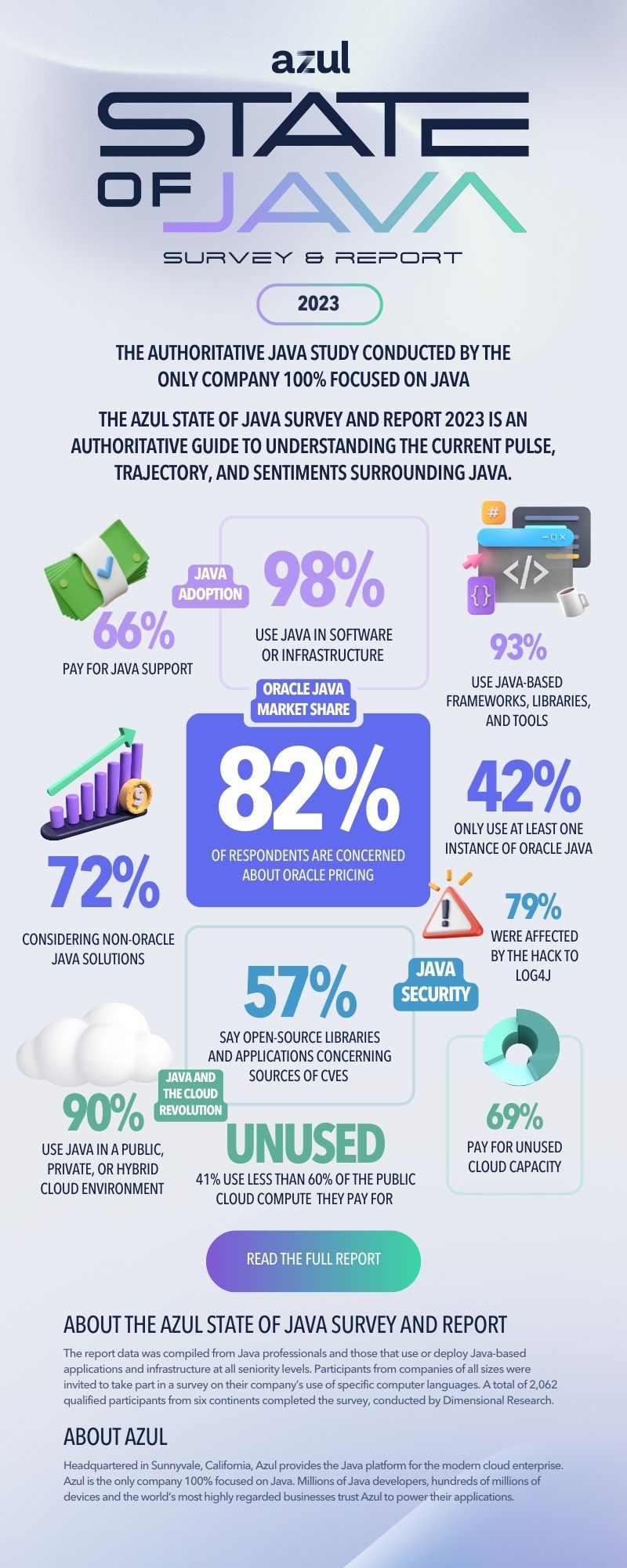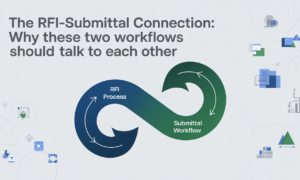If you thought Java’s glory days were a thing of the past, think again. The digital realm is still very much Java’s playground, a fact recently reaffirmed by Azul’s groundbreaking “State of Java” report. Released by Azul Systems Inc., this comprehensive survey offers insights from over 2,000 global Java users, painting a clear picture of Java’s unyielding stronghold in the complex web of technologies used by businesses of all sizes today.
In this era where cost containment, cloud computing and cybersecurity are at the forefront of every tech conversation, the findings of Azul’s survey couldn’t be more timely. From the ripples caused by Oracle’s Java pricing changes to soaring cloud costs, to the looming shadows of security vulnerabilities like Log4Shell, the report serves as an unfiltered lens into Java’s current challenges and opportunities.
So, what does this mean for enterprises and tech aficionados alike? Let’s dive into the key revelations of Azul’s “State of Java” survey, unraveling the secrets behind Java’s enduring relevance and exploring the implications for the future of enterprise applications.
Oracle’s Java Pricing Shakes Up the Industry
According to the Azul State of Java Survey & Report 2023, Java is still a major player in the tech world, with 98% of businesses relying on it. But Oracle’s latest Java SE Universal subscription pricing, which shifts from processor-based to employee-count, has caused widespread dissatisfaction.
In fact, approximately 82% of Oracle Java users are concerned, with more than 70% considering open-source Java alternatives like OpenJDK. And while 42% still use Oracle Java, a significant 74% are also exploring OpenJDK providers.
Emiliano Fisanotti, vendor management specialist and University Software Licensing Community executive member from The University of Sydney, is one of many voices calling for a shift to more predictable and cost-effective Java solutions. This shift indicates a notable industry trend towards open-source Java, as Oracle’s recent pricing changes have made proprietary Java solutions less attractive. “As with most universities, we are always looking for efficiency from our IT vendor relationships, not just by lowering costs, but also by eliminating uncertainly and distractions. Supporting so many departments and managing a wide range of vendor relationships means I can’t afford to worry about unexpected headaches such as price increase and audits,” said Fisanotti.

Java’s Critical Role in Cloud Cost Optimization
Yet, the findings didn’t stop there. The report also found that Java is still very important in the cloud era, with a staggering 90% of companies using it in public (48%), private (47%), or hybrid (40%) cloud environments. As organizations increasingly move towards the cloud for its scalability and agility, challenges around cost and security emerge. A significant portion, nearly 70%, admit to paying for unused cloud capacity, highlighting prevalent overprovisioning.
In these economically uncertain times, a vast majority (95%) have acted to cut cloud expenses in the past year. Notably, 46% are leveraging high-performance Java platforms to optimize cloud resource use, demonstrating Java’s potential in efficient cloud cost management.
To this point, even Jevin Jensen, research vice president, Intelligent CloudOps at IDC, highlighted the issue of overprovisioning for peak demand, emphasizing the need for efficient resource usage, especially in tight budget scenarios. “Enterprises often don’t use all the cloud computing they pay for due to the over-provisioning of virtual servers required to accommodate spikes in demand from ultra high-performing applications and those where end-user experience is paramount. But this creates challenges for IT teams facing a difficult budget environment that requires more efficient use of resources,” said Jensen. “Running Java applications and infrastructure with a faster and more efficient JVM can provide superior performance, consistency, and the capacity to address these challenges, gaining tangible business results today.”
Log4Shell Vulnerability’s Widespread Impact on Organizations
The Log4Shell incident, which involved a compromised Java-based logging library (Log4j), has brought to light the widespread security risks in Java applications. A whopping 80% of respondents were affected, with the Department of Homeland Security labeling it as one of the most serious software vulnerabilities in history. About half of the respondents had to work long hours to mitigate the issue, while 30% dealt with exploitation attempts and nearly half of those organizations acknowledging they were successfully hacked.
Yet, even more concerning, third-party and open-source applications and libraries are deemed the most worrisome sources of Common Vulnerabilities and Exposures (CVEs). Nearly two-thirds of survey participants agree, with 57% particularly anxious about open-source and 51% about third-party libraries and applications.
The Implications for Java’s Future and Oracle’s Role
The insights from Azul’s “State of Java” report reaffirms the pivotal role this widely adopted programming language will continue to play in the tech landscape, especially in cloud environments, and addressing security concerns. Despite challenges like the Log4Shell vulnerability, Java’s adaptability, performance, and widespread usage indicate a strong future. Furthermore, as companies seek cost-effective and efficient solutions, Java, particularly in high-performance JVMs, appears well-positioned to meet these evolving demands.
However, as we learned, for Oracle, the situation presents a more complex scenario. The backlash against their Java SE Universal subscription pricing highlights a growing preference for predictable, cost-effective, and open-source alternatives. Thus, Oracle’s decision has inadvertently accelerated the industry’s shift toward open-source Java solutions like OpenJDK. This trend not only challenges Oracle’s market dominance but also suggests a changing landscape where flexibility and affordability are increasingly paramount.
In essence, while Java’s utility and relevance continue to soar, Oracle might need to rethink its strategy to maintain its influence. Embracing the industry’s shift towards open-source and more transparent pricing could be crucial for Oracle to stay relevant in the ever-evolving world of Java and beyond.
The Future of Java is Bright
The bottom line here is that Azul’s “State of Java” report is a valuable resource in the tech industry, highlighting Java’s enduring significance and signaling a time of significant change. It’s a clear call to action for stakeholders to adapt, innovate, and revisit their strategies in a application and infrastructure ecosystem that is constantly in flux. As Java continues to prove its worth in various realms, particularly in cloud computing and cybersecurity, understanding its evolving landscape becomes crucial for businesses and developers alike.
Scott Sellers, co-founder and CEO at Azul, recently commented and explained that the State of Java Survey & Report data underscores Java’s crucial role in business success and the significance of high-performance JVMs in achieving application service levels and cloud cost efficiency. “The choices businesses make around Java directly impact their operational efficiency and the bottom line,” said Sellers. “Concerns raised over Oracle’s recent Java licensing and pricing changes also highlight a need for stability and trust in the technology partnerships that businesses form with their strategic vendors. Our sole focus is to champion this trust, ensuring that organizations of all sizes can continue to innovate, optimize and grow with the best Java solutions and strategies.”
We encourage you to delve deeper into the fascinating insights and detailed analyses by exploring the full “State of Java” report. It’s an invaluable resource for anyone looking to stay ahead in the world of technology and to make informed decisions in this era of change. Don’t miss the opportunity to gain a comprehensive understanding of Java’s current state and its potential trajectory. Check out the full report today!



































